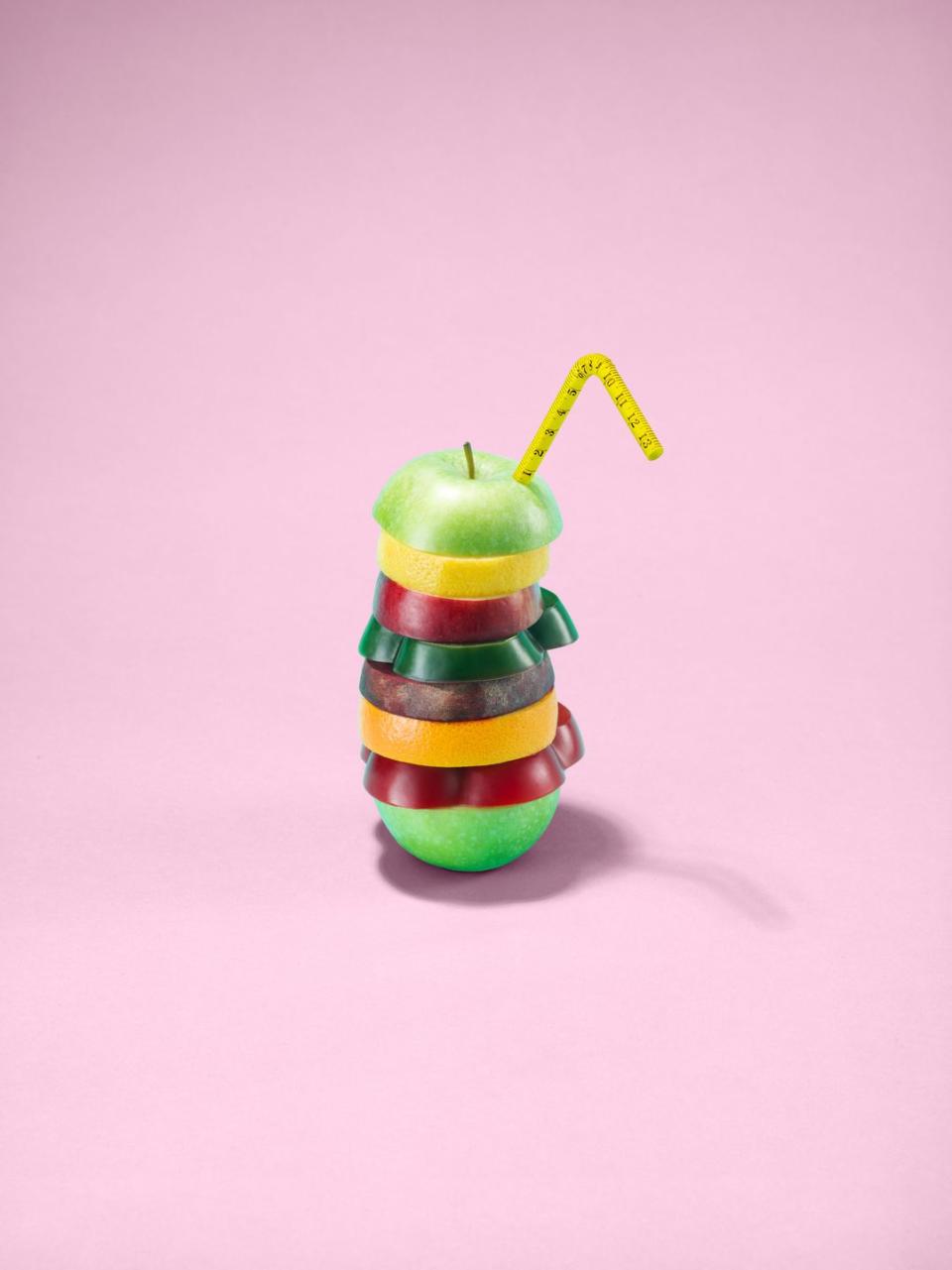Nutritionists Rate the 6 Most Popular Fasting Diets
Fasting appears in many guises. There are cleanses, purges and digestive resets. There are various restricted ‘eating windows’. But ultimately, they all amount to the same thing: a drastic reduction in your calorie allowance for a designated period of time. The concept is nothing new. Fasting is arguably the original ‘diet’ (the practice gets a fair few nods in the Old Testament, after all), but its popularity has swelled in recent years and now every man and his spotter is seemingly singing its praises, whether for health and performance or more aesthetic benefits. But there are myriad iterations and, with so many handbooks, cookbooks, detox shots and supplements purporting to help you turn hunger pains into fitness gains, it can be hard to cut through the noise. Can a liquefied lunch really reverse cell ageing? Will stuffing in a day’s worth of fuel at dinner help you crush it in the gym tomorrow? Is alternating between feast and famine any better than a steady diet? We consulted the experts to help you separate the absurd from the abs-defining.
The Warrior Diet
Supposedly based on the habits of ancient Greek and Roman soldiers, this intermittent-fasting regimen involves consuming next to nothing during the working day, then gorging in the evening.
How does it work?
Author Ori Hofmekler’s approach to intermittent fasting might be referred to as the 20:4 diet. Like the better-known 16:8 plan, it consists of a daily fasting window and an eating window. However, the latter is much shorter and commonly limited to one big feast. It’s allegedly inspired by the lifestyles of ancient warriors, who would eat little during their active days, then reward themselves with a night-time blowout.
The problem is that for all his experience in the Israeli Special Forces and romantic ideas about ancient soldiers, Hofmekler’s approach lacks concrete science. There’s scant evidence that his plan is any more effective than the simpler 16:8 diet, while chronobiologists point out that we are most insulin-sensitive during daylight hours – making a large meal in the afternoon, rather than the evening, theoretically more conducive to weight loss.
While the diet allows a small amount of snacking on nuts and fruits throughout the day, the prolonged fasting could cause your blood-sugar levels to drop. Yale University School of Medicine research found that this can increase the urge to indulge in low-nutrient, high-calorie foods during your end-of-day feast.
‘The average office worker isn’t a warrior,’ says Daniel O’Shaughnessy, a functional medicine practitioner and director of The Naked Nutritionist. ‘An ancient warrior wouldn’t have the chance to gorge on processed food like we do. This diet seems likely to promote an unhealthy relationship with food.’ If your resolve is forged of iron and you fear no hunger, this might not be an issue. But there are more straightforward ways to fight weight gain.
Effectiveness: 2/5

The 16:8 Diet
The name refers to the ratio of daily hours spent fasting to when eating is allowed. You fast overnight (and usually all morning), then consume your calories in an eight-hour window.
How Does It Work?
The diet of choice for A-list beasts such as Hugh Jackman and Terry Crews, the 16:8 diet has gained popularity thanks to the relative ease with which it fits into modern lifestyles. After all, research suggests that almost half of Britons don’t eat a proper breakfast anyway.
Like other forms of fasting, it works by limiting your eating time to a defined period. Not only does this cap your calorie intake by default, reducing your ability to graze, it also improves your body’s ability to burn fat by lowering your insulin levels.
The 16:8 has more scientific clout than most of the fasting diets. A review in the journal Behavioural Sciences notes that rates of fat loss when fasting were just as high (sometimes higher) than regular low-calorie diets, while a study in the Journal of Translational Medicine shows that the time-restricted feeding approach can help you lose fat while maintaining muscle.
Make sure you’re tailoring your fasting window to your workout time. “If you’re training in the morning, try to have breakfast shortly after your workout to fuel your muscles, then have an early dinner,” says O’Shaughnessy. “If you’re training late in the day, I would skip breakfast and eat a bigger lunch instead.”
Effectiveness: 4/5

The Water Fast
No food, no juice – just water. Some people might water fast for 24 hours once or twice each month, while others advocate doing it for as long as three consecutive days.
How Does It Work?
This is the least complicated of all the fasting diets. It’s also one of the most difficult. A popular iteration of water fasting is “Eat Stop Eat”, in which you take in no calories at all for 24 hours. For example, you could eat a late breakfast at 10am, then subsist on water until 10am the next day. On the non-fasting days, you simply eat as normal (if your growling stomach permits it).
Others advocate fasting for lengthier periods of 48 or even 72 hours, the latter of which should only be attempted under medical supervision.
As with all fasts, the goal is autophagy, the process by which your cells recycle themselves. Fasting will accelerate this activity; theoretically, the bigger your calorie deficit, the more impressive the results. Naturally, you’ll lose weight. However, you stand to lose other things, too. “I don’t know anyone who has completed a prolonged water fast and not seen their training suffer,” says Rick Miller, principal dietitian at King Edward VII’s Hospital and one half of performance coaching team Miller & Everton. “It’s inevitable that you’ll lose some muscle mass, even if you do see rapid weight loss.”
As for hitting the gym on a diet of H2O, Miller doesn’t recommend it. “When you’re in a starved state, you’re going to have very low blood glucose, and you’ll potentially be disorientated,” he says. You’re better off just having a sandwich and crushing a CrossFit session.
Effectiveness: 1/5

The 5:2 Diet
Whereas the 16:8 runs on a daily cycle, the 5:2 functions across a week. For five days, you eat normally. For two, you limit yourself to a gruelling 600-800kcal per day.
How Does It Work?
It was first popularised by journalist Dr Michael Mosley, who studied cyclical dieting protocols – the kind already popular with bodybuilders – and adapted them for the masses. The diet has since been endorsed by everyone from Benedict Cumberbatch to Beyoncé.
It owes its popularity in part to its relatively unrestrictive nature: while the two low-calorie days can be brutal, followers can revel in the freedom to eat however they want on the other days (though you are meant to eat sensibly).
From a scientific perspective, there’s plenty of evidence that these low-calorie days can be beneficial for fat loss. Some studies suggest that a temporary reduced calorie intake can also boost the production of white blood cells, which play an important role in your immune system, as well as curbing the risk of Alzheimer’s, Parkinson’s and type 2 diabetes.
The main sticking point is what to eat on the fasting days. Miller says you should take most of the popular 5:2 “recipes” with a pinch of salt – and a dash of egg white. He suggests beefing up the “soup and crackers” approach with higher-protein meals, so you don’t start losing muscle mass. It’s worth noting that, since his plan’s original publication, Mosley’s suggested daily calorie intake for men has been generously upped from 600kcal to 800kcal.
When it comes to training on low-calorie days, Miller recommends “active rest”, which can include anything from a brisk walk or an easy bike ride to a quick runaround with the kids. “It sounds like a paradox, but it just means don’t sit around doing nothing,” he says. “Don’t waste the opportunity to be active, but still recognise that you are under-fuelled.”
Effectiveness: 3/5

The Juice Fast
This is exactly what it says on the carton. Ingest nothing but liquefied fruits, roots and vegetables for a set period – anything from 24 hours for beginners to an entire week for the hardcore.
How Does It Work?
The concept has been buoyed by numerous high-profile Hollywood endorsements, as well as the widespread assumption that anything green is good for you. The juice fast purports to reverse digestive damage and flush toxins from the body.
There are a few drops of truth to those claims: a UCLA study observed an increase in participants’ general well-being after a three-day cleanse, along with a rise in healthy gut bacteria. Kale juice has been associated with a rise in HDL cholesterol (the “good” kind), while citrus and carrot have been linked to a lower risk of heart disease.
However, don’t click “like” just yet. An article published by the Harvard Medical School is critical of the general lack of scientific evidence for most of juicing’s benefits, especially the vague claims that it can “detoxify” the body and counteract chronic diseases. Sure, kale and other healthy foods will support your body’s natural healing processes, but the science suggests that they work just as well when sautéed as drunk.
A juice-only diet might help you shed some unwanted pounds, too (you’ll probably struggle to knock back the 2,500kcal that the average man requires every day), but this comes at a cost. By stripping the fibre out of fresh produce, you concentrate the sugar. “Even if you’ve got plenty of vitamins and minerals, all of that sugar means you’re raising your insulin levels very high,” says Miller. “Most juices don’t include any protein, either, so you’re not getting the nutrients needed to support muscle recovery.”
Juice fasting might be viable for the sometime yogi on a meditation retreat in Bali, but a zero-protein, high-sugar diet is likely to leave you suffering burnout on an average rainy Monday. If you’re still tempted, though, fast for just one or two days, ideally when you don’t have much on, and supplement your juice with a blended bean broth for satiating fibre and a touch of protein. Oh, and there’s no need to pay £35 per day for a delivery box. That’s a squeeze you can do without.
Effectiveness: 2/5

The Bulletproof Diet
This divisive diet from bio-hacker Dave Asprey is based on 16:8, but adds buttery coffee to an otherwise empty morning menu
How does it work?
Of all the fasting options out there, this is probably the most… out there. It’s time-restricted eating, but with a unique addition: bulletproof coffee, your regular cup of joe blended with grass-fed butter and brain-sharpening MCT oil. When you’re not slurping this down, you consume the bulk of your calories during a set time window but with a keto focus: high-fat, low-carb foods, including lots of red meat, fatty fish, avocado and eggs. Portion sizes aren’t restricted, but how much rib-eye can one man eat?
This might seem a bit nonsensical, but it’s based on an established dietary principle. Ketosis is the process by which a body starved of glucose begins to burn its own fat stores instead. A high-fat diet promotes ketosis alongside the preservation of muscle mass – which is why it’s big among bodybuilders. But it’s hard to sustain when a serving of rice can throw you out of your ketogenic state. Plus, Asprey’s coffee meets 75% of your daily allowance of saturated fat. At best, it’s a contentious recommendation.
With that in mind, it’s easy to see why some feel bulletproof coffee is no better than snake oil. To Miller, it’s more trend than treatment. ‘It’s funny, really, because a tablespoon of butter is around 90 calories. So, if you’re having a couple of cups, you might as well have scrambled a couple of eggs.’ A less revolutionary idea, perhaps, but a habit that’s more likely to stick.
Effectiveness: 1.5/5
You Might Also Like


